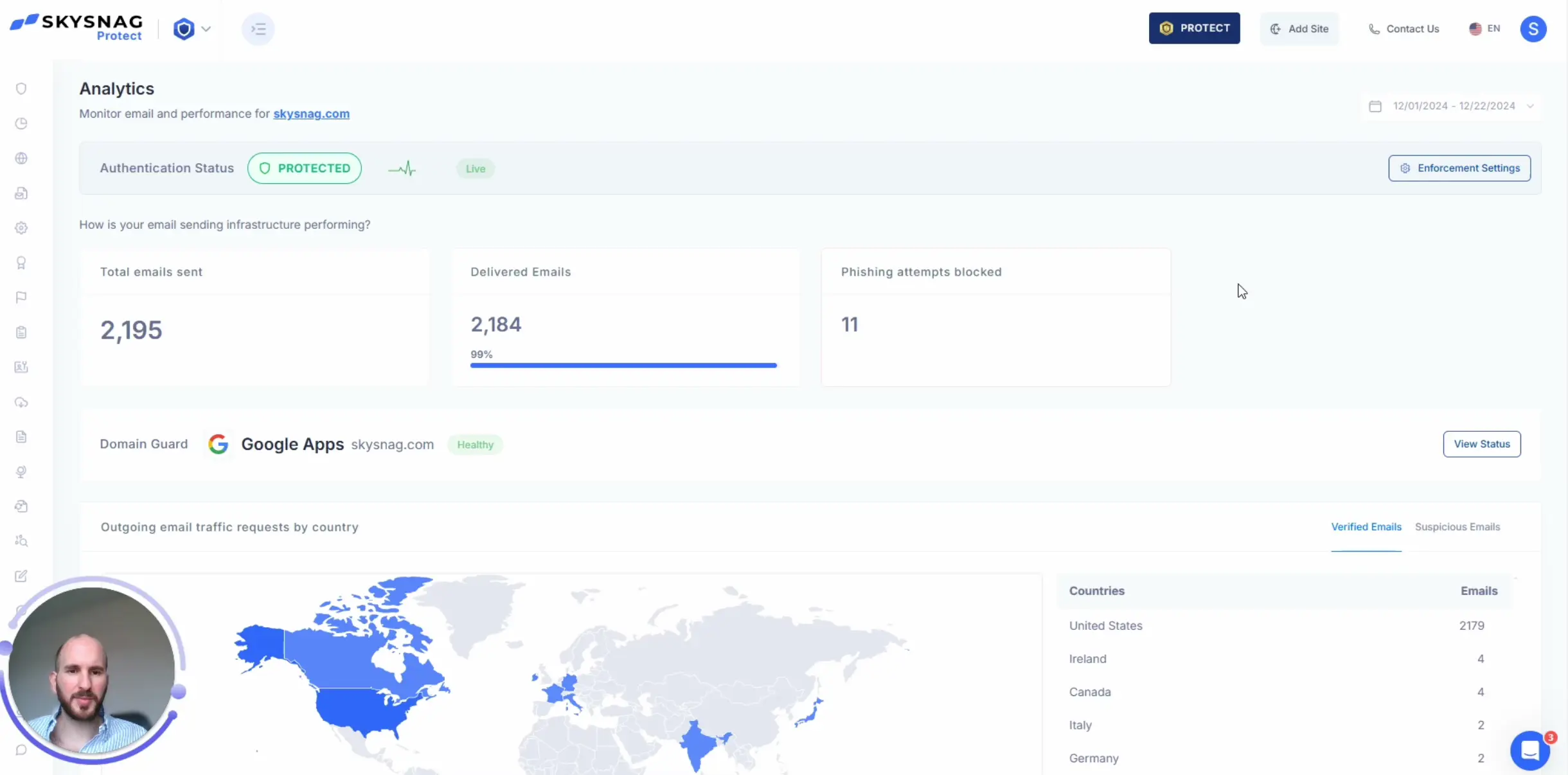DMARC Report Received from Salesforce: What You Need to Know

Understanding DMARC Reports from Salesforce
Salesforce is a leading CRM and cloud-based platform that enables businesses to manage customer relationships and send a wide range of emails, including marketing and transactional emails. To ensure that emails sent through Salesforce are properly authenticated, DMARC (Domain-based Message Authentication, Reporting & Conformance) reports provide essential insights into how recipient servers handle your emails, focusing on SPF and DKIM alignment. Monitoring and acting on these reports helps protect your domain from phishing, spoofing, and other email-based threats, while improving deliverability and ensuring that emails land in your recipients’ inboxes.
Key Components of Salesforce DMARC Reports:
1. Source IP Address: Shows the IP address from which Salesforce sent your email. Monitoring this helps confirm that your emails are being sent from Salesforce’s authorized IPs, preventing unauthorized sources from using your domain for malicious purposes.
2. DKIM Alignment Results: Indicates whether the DKIM signature aligns with the domain specified in the “From” header. Salesforce supports DKIM signing, and ensuring proper alignment is crucial for passing DMARC checks and maintaining email security.
3. SPF Alignment Results: Verifies whether the sending IP address from Salesforce is authorized by your domain’s SPF record. SPF alignment ensures that only authorized IP addresses can send emails on behalf of your domain, protecting your brand from spoofing.
4. Disposition: Informs you how the recipient server handled your email—whether it was delivered, quarantined, or rejected—based on the DMARC policy you’ve set.
5. Message Count: Displays the number of emails sent from a specific IP address, helping you monitor Salesforce email activity and identify any potential misuse or suspicious activity.
Automating DMARC Parsing for Salesforce
Manually parsing DMARC XML reports from Salesforce can be overwhelming, especially if your business sends large volumes of emails. Automating this process with tools like Skysnag simplifies DMARC management and enables faster detection of issues that could affect email security or deliverability.
– Data Aggregation Across Providers: If you use Salesforce in combination with other email platforms, Skysnag can aggregate DMARC reports from multiple providers into a single view. This helps you manage email authentication across all services and ensures a consistent approach to DMARC compliance.
– Visualizing Key Metrics: Skysnag transforms raw DMARC XML data from Salesforce into user-friendly dashboards, highlighting key metrics such as DKIM/SPF pass rates, unauthorized email attempts, and top sending IP addresses. This allows you to quickly identify issues and take action to improve email performance and security.
– Automated Incident Response: Skysnag provides real-time alerts when Salesforce emails fail DMARC checks (e.g., SPF or DKIM misalignment). These alerts enable you to respond quickly, adjusting DNS settings or blocking malicious IP addresses to maintain email security and deliverability.
– Forensic Reporting: Some DMARC reports include detailed forensic data, such as full headers from emails that failed authentication. For Salesforce users, this data is critical for diagnosing why certain emails are not passing DMARC checks and helps improve the overall security of your email infrastructure.
Ensuring Proper DMARC Alignment for Salesforce
For Salesforce-sent emails to pass DMARC checks, both DKIM and SPF alignment with the domain used in the “From” header is critical. Misalignment can cause emails to be quarantined or rejected by recipient servers, even if other checks pass. Properly configuring DKIM and SPF alignment ensures that your emails are authenticated and helps prevent misuse of your domain for phishing and spoofing attacks.
Skysnag’s Custom Solutions for Salesforce:
– DKIM Key Management: Skysnag helps ensure that the DKIM keys for Salesforce emails are properly aligned and up-to-date. If any misalignments or outdated keys are detected, Skysnag will alert you, allowing you to quickly address the issue and ensure compliance with DMARC policies.
– SPF Flattening: If you use multiple services in addition to Salesforce, your SPF record can become complex and exceed DNS lookup limits. Skysnag automates SPF flattening to ensure that your SPF record stays optimized and within DNS lookup limits, preventing potential authentication failures.
– Policy Recommendations: Based on the insights gathered from your Salesforce DMARC reports, Skysnag can recommend adjustments to your DMARC policy, such as moving from “none” to stricter enforcement modes like “quarantine” or “reject.” This helps protect your domain from phishing and spoofing while ensuring that legitimate emails are delivered successfully.
By automating DMARC report parsing and providing customized solutions for Salesforce, tools like Skysnag ensure that your emails are properly authenticated, securely delivered, and protected from unauthorized use, maximizing both your domain’s reputation and email performance.




